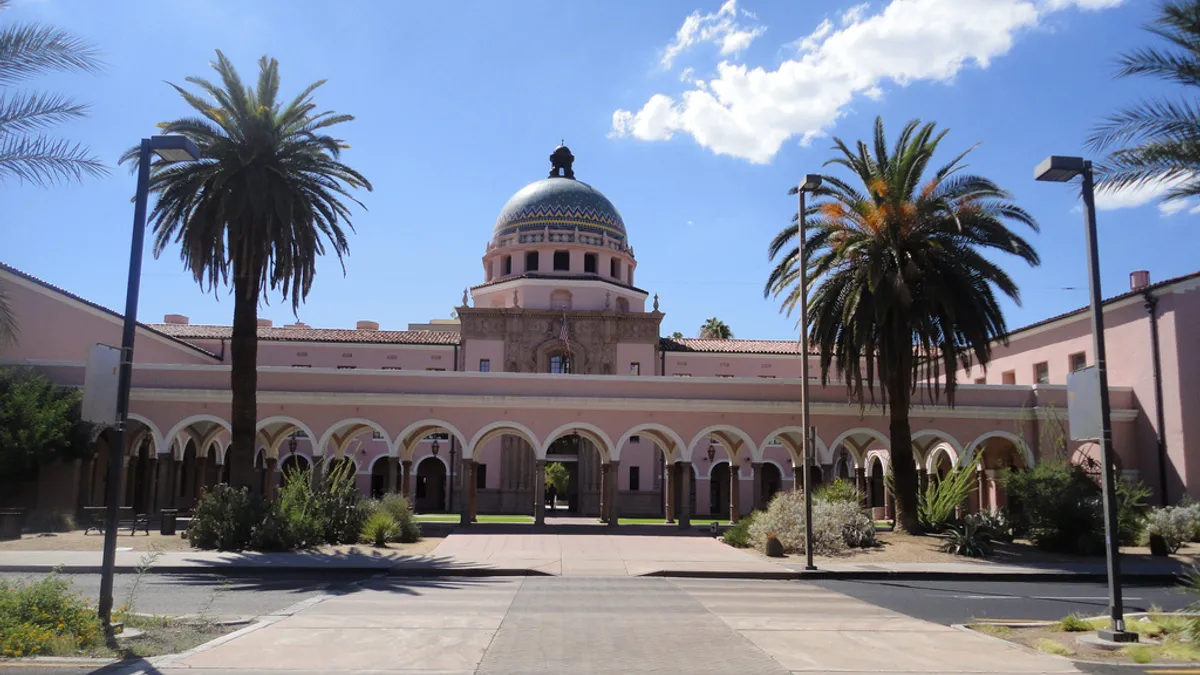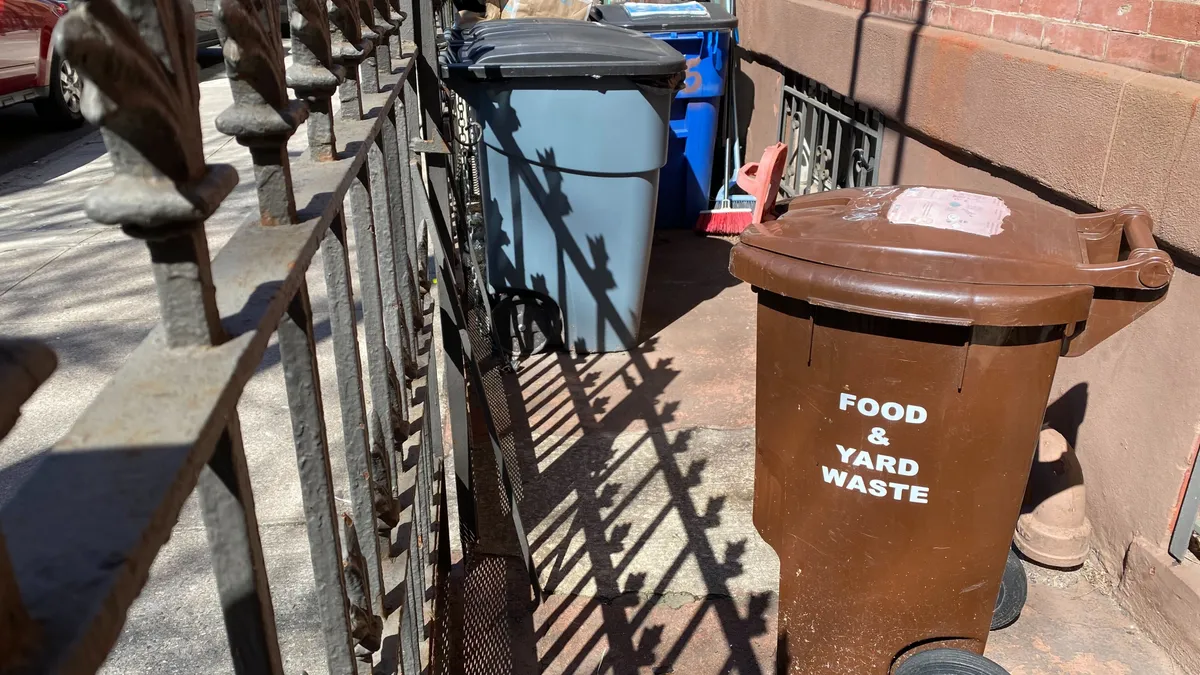Tucson, AZ is one of the fastest warming cities in the United States. And its residents have taken notice.
June usually marks the start of the area's monsoon season. The rainfall is "one of the most beautiful events of the summer," Regina Romero, the Democratic nominee for Tucson mayor, told Smart Cities Dive. But this year, the rainfall was less frequent, lighter and later than usual.
"We’re feeling the heat," she said. "We're right in the eye of the storm of a heating world."
Romero, the first Latina woman ever elected to Tucson City Council, could become the city's first Latina and woman to be elected mayor, and she's put fighting climate change at the center of her campaign.
Smart Cities Dive caught up with Romero to discuss her smart city platforms and goals, including a plan to plant 1 million trees by 2030 and transition the city's vehicle and bus fleet to 90% electric by 2032.
The following interview has been edited for brevity and clarity. The rest of Smart Cities Dive's exclusive Q&As with mayors and candidates can be read here.
SMART CITIES DIVE: Tucson is among the fastest warming cities in the U.S. How are you already seeing climate change's effects in the city?
REGINA ROMERO: The Sonoran Desert is one of the most biologically diverse areas of North America. It's not a simple desert. A lot of people think of the desert [and] of Tucson as sand, but we have mountainous regions. It's an amazing biologically diverse area. And one of the most beautiful events of the summer [that] people wait for are monsoons.
Our monsoons are rain falls. It rains for an hour or two hours. Usually the traditional time for our monsoons… starts at the end of June. This year, they didn't really hit until August. And we got at least four inches less rain [than normal].
Water in the desert is very important. And being able to protect our water resources and use the rain that we get is something that's really important for me. I'm pushing as mayor, a green infrastructure plan where we… create infrastructure that directs our rainwater and [uses] our rainwater to plant more trees in the city of Tucson so that we can take advantage of what falls from the sky.
You propose developing an equitable green infrastructure program to manage flooding and harvest storm water. How will you incorporate equity into that program?
ROMERO: Here in Tucson, we have this map of the heat islands in the city. If we put a heat island map [of] the places in the city that suffer more of [a] heat island effect over a map that tells us where our low income communities are, those heat island maps are almost perfectly identical to the low-income areas in our city… we need to target areas of our city where we're seeing the effects of climate change happen more.
On the campaign trail, I talk about climate change as an environmental issue… but it's not just an environmental issue, it's a public health hazard. The communities that are at the frontline of climate change are seniors, children, women, low-income communities and those that work outside. We have to make sure that we're investing throughout the city, of course, but [also] in the areas where climate change is most felt.
We're going to take a look at climate resiliency with an equity lens: What are the areas that need immediate attention and investing? A lot of the areas that suffer from flooding are in the same areas that have the big heat island. Redirecting our storm water by doing the green infrastructure, massive harvesting, neighborhood level projects and planting trees will alleviate and manage flooding while harvesting our storm water to plant trees in these areas.
Nationally, there’s been an increasing amount of pressure put on lawmakers and officials to curb climate change. Have you been feeling that pressure on the local level among Tucson residents?
ROMERO: Yes, we have been canvassing our neighborhoods in the city of Tucson since we started our campaign in January. We needed to get signatures to get our name on the ballot so part of the direction I gave to our volunteers… was to ask [residents] what their biggest issues are.
And besides potholes and road repair, people care about climate change. Our summers are getting hotter and hotter. Our monsoons are diminishing. People are very concerned about our water resources. When we started getting our signatures, we heard that people care about climate change, so then we did a very tiny poll of Tucson voters, and climate change also came on top of the issues that Tucsonans care about.
It's something that I'm very passionate about. We need to act fast and aggressively and boldly. And there are things we can do… maybe not on a national level but here in our city, we need to act now.
What do you think will be the biggest obstacles to achieve your emission reduction goals?
ROMERO: The biggest obstacle is the Trump administration... really taking huge gigantic steps back. What we would need to get ahead and at least stop the disastrous affects of climate change, is investment in infrastructure and transit systems to mitigate the affects of climate change. We need to understand that it's not just wasting or spending money on curbing this. It's actually an investment.
We should see it as an economic opportunity moving us into the future... we need federal investment in programs like the ones I'm talking about for the City of Tucson.
We shouldn't see investing in climate resiliency and adaption as a waste of money, but we should see it as a new opportunity to move into the future and train workers for the fields of the future.




















